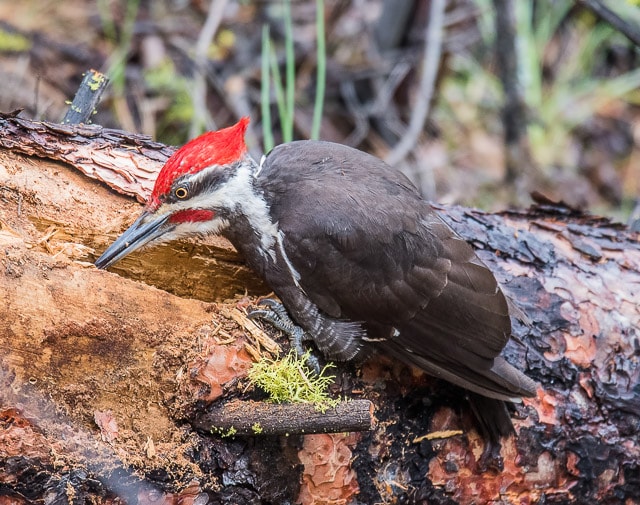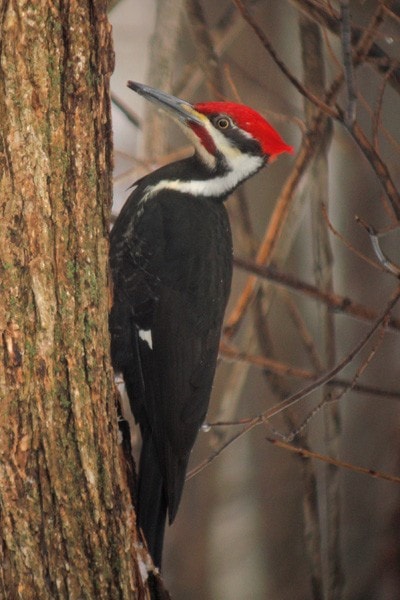New research has shown that, as long as tree cover remains above a certain threshold, Pileated Woodpeckers and housing developments can coexist. The study, recently published by The Condor: Ornithological Applications, involved the trapped and radio-tagging of 16 Pileated Woodpeckers at nine sites with varying degrees of urbanisation in suburban Seattle.
Tracking each bird for about a year, researchers found that Pileated Woodpeckers used not only forested areas such as parks, but also lightly and moderately urbanised areas where some trees had been retained, taking advantage of resources such as garden birdfeeders. These results show that retaining at least 20 per cent forest cover, including standing dead trees, over large suburban areas may help sustain Pileated Woodpeckers, and perhaps even other species tied to them.

Pileated Woodeckers can coexist with housing developments, as long as tree cover remains above a certain threshold (Keith Allen).
Despite potential risks from threats such as feral cats and collisions with windows, the researchers believe that cities can play an important role in the conservation of biodiversity. The two largest woodpeckers in North America, Imperial and Ivory-billed Woodpeckers, are believed to have gone extinct during the 20th century. As a result, when standing dead trees and other crucial resources are lost to urbanisation, the survival of their cousin, Pileated Woodpecker, remains a concern among ornithologists.
The University of Washington's Jorge Tomasevic (now at the Universidad Austral de Chile) was involved with the tagging of the woodpeckers, and said: "You'd think that such large bird would be easy to find, especially when carrying a transmitter, but they did a very good job of hiding. It was also very challenging to work in populated areas. I have so many anecdotes, good and bad, about dealing with people and people dealing with me doing my work.
"Some people were very friendly, but others were a little nervous with me walking around the neighbourhood. I tried to look as official as possible, with University of Washington logos on my jacket, and I created a website for the project and printed some business cards. It was a great opportunity to do outreach, and I'm still friends with some of the neighbourhood residents."

Sixteen Pileated Woodpeckers were tagged during the study (John Wilcox).
University of Delaware's Desiree Narango, an expert on avian urban ecology, added: "As suburban sprawl becomes more and more ubiquitous, it's imperative that we consider which specific yard features can be promoted to share our neighbourhoods with wildlife. This paper is a nice example showing that even a mature forest specialist can use and navigate the suburban landscape if we provide the resources they need: large trees and some retained wooded areas."
Reference
Marzluff, J M, and Tomasevic, J A. 2018. Use of suburban landscapes by the Pileated Woodpecker (Dryocopus pileatus). The Condor vol 120. issue 4. DOI: 10.1650/CONDOR-17-171.1


